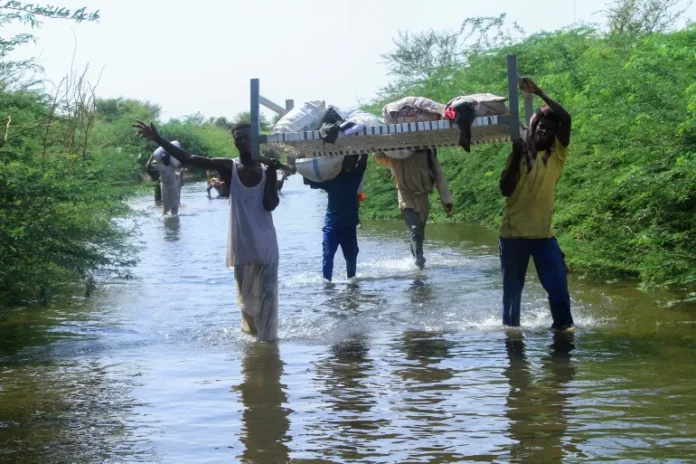The Ethiopian Ministry of Water and Energy on Saturday rejected the Egyptian accusations directed at Addis Ababa, claiming that it caused the Nile River flooding due to unilateral measures related to the operation of the Ethiopian Renaissance Dam, describing these statements as “false.”
The ministry said in a statement that “the Egyptian Ministry of Water Resources and Irrigation issued a statement full of lies, contradictions, and distortions. A simple comparison between the historical data of the Blue Nile flow before the construction of the Renaissance Dam and the currently regulated external flow data clearly shows where the truth lies,” according to the statement.
The statement confirmed that “the Renaissance Dam has reduced the average peak flood volume. The heavy rains that occurred in the past few months in the Ethiopian highlands could have caused historic destruction to human life and infrastructure in Sudan and Egypt,” explaining that “countries located on the banks of the lower Nile, which enjoy regulated flow throughout the year, are beneficiaries from the construction of the Renaissance Dam.”
.
The Ethiopian Ministry of Water and Energy clarified that “flow data recorded in Sudan for 93 consecutive years indicate that there were times when peak floods could rise to more than 800 million cubic meters per day in August and more than 750 million cubic meters per day in September before the construction of the Renaissance Dam. In contrast, the average daily release from the Renaissance Dam in August and September 2025 was 154.7 million cubic meters per day and 472 million cubic meters per day, respectively.”
Direct Threat to the Security and Stability of the Entire Region
On Friday, the Egyptian Ministry of Water Resources and Irrigation issued a statement regarding the Nile River flooding for the year 2025, pointing out that “the unilateral management of the Ethiopian Renaissance Dam, which violates international law, represents a direct threat to the lives and security of the peoples of the downstream countries.”
For more than a decade, Egypt has strongly criticized the dam, fearing losing its main water source, considering it an “existential threat.”
On Friday, the Egyptian Ministry of Water Resources and Irrigation said it had monitored “the developments of the Nile flooding this year and the related reckless unilateral actions by Ethiopia in managing its (Renaissance Dam), which is illegal and in violation of international law.”
It considered that “these actions caused damage to Sudan (…) lack the simplest rules of responsibility and transparency and represent a direct threat to the lives and security of the peoples of the downstream countries.”
Several areas in Sudan, including the capital Khartoum, have been experiencing flooding for weeks. Sudanese authorities attribute this to climate change, exceptionally heavy rains, and the opening of dam gates.
The large Ethiopian Renaissance Dam is located on the Blue Nile, which originates in Ethiopia and flows into Sudan where it joins the White Nile to form the Nile River. The Blue Nile provides up to 85% of the Nile’s water.
Ethiopia officially inaugurated the Renaissance Dam on September 9, a project that has triggered disputes with the downstream countries Egypt and Sudan, which fear that it threatens their historic shares of Nile waters.
Subsequently, Cairo announced sending a letter to the UN Security Council in which it expressed its rejection of “any unilateral actions” by Ethiopia. It considered that operating the dam without a legal agreement “constitutes a flagrant violation of international law and the governing customs of international rivers and represents a direct threat to the security and stability of the entire region.”
The issue of filling and operating the Ethiopian Renaissance Dam, which began construction in 2011, remains a major dispute between Egypt, Sudan, and Ethiopia, with Cairo and Khartoum demanding a legally binding tripartite agreement on filling and operation.
Like Sudan, Egypt, with a population of about 110 million, depends on the Nile River to meet 97% of its water needs, especially for agriculture.


